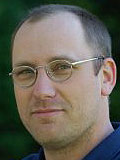|
|
|
<<< Previous speaker
|
next speaker >>>
|
Markus Völter, Independent Consultant

Markus Völter works as an independent researcher, consultant and coach for software technology and engineering. His focus is on software architecture, model-driven software development and domain specific languages as well as on product line engineering. Markus also regularly writes (articles, patterns,
books) and speaks (trainings, conferences) on those subjects. Contact him via voelter@acm.org or www.voelter.de
|
Presentation: "Six Design Principles Illustrated"
Time:
Wednesday 14:40 - 15:30
Location:
Store Sal
Abstract: In software development, we're all very much influenced by today's technologies and frameworks. There's a tendency to think about, describe and build systems in a way that's specific to the technologies in use today. However, this has a number of disadvantages wrt. complexity, longevity and maintainability.
I think it is essential that, in addition to understanding specific technologies, we also (re)consider a number of basic principles of building software and make sure those principles play a central role in day-to-day development. Over the last years I have been collecting and describing some 40 of those principles. In this session, I will provide a short overview over this collection and then describe six of those principles in more detail, including extensive examples.
Workshop: "Architecture As Language"
Time:
Thursday 09:00 - 12:00
Location:
Musikhuset C 103
Abstract: Architecture is typically either a very non-tangible, conceptual aspect
of a software system that can primarily be found in Word documents, or
it is entirely driven by technology ("we use an XML architecture").
Both are bad:
the former makes it hard to work with, and the latter hides architectural concepts behind technology hype.
What can be done? As you develop the architecture, evolve a
language that allows you to describe systems based on this
architecture. Based on my experience in a number of real-world
projects, this makes the architecture tangible and provides an
unambiguous description of the architectural building blocks as well as
the concrete system while still staying away from technology decisions
(which then can be made consciously in a separate step).
This tutorial comes in two parts: The first part of this paper
illustrates the idea using a real-world story, executed as a role play
between an architect and a consultant. The second part summarizes the
key points of the approach using slides and discussions.
|
 |
| |
 Markus Völter works as an independent researcher, consultant and coach for software technology and engineering. His focus is on software architecture, model-driven software development and domain specific languages as well as on product line engineering.
Markus Völter works as an independent researcher, consultant and coach for software technology and engineering. His focus is on software architecture, model-driven software development and domain specific languages as well as on product line engineering.

